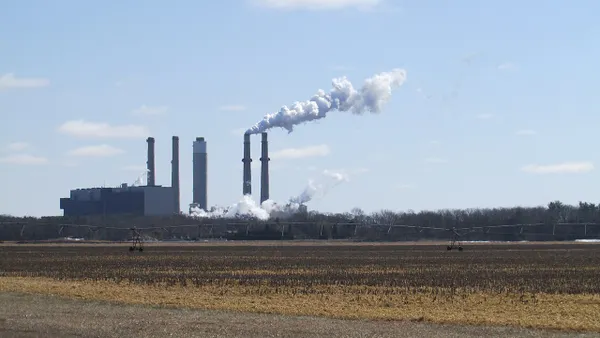Dive Brief:
-
Sierra Club is highlighting a preliminary study by the California ISO (CAISO) as an indication that its plan to merge its operating system with that of PacifiCorp would increase carbon dioxide pollution.
-
The study is a result of a directive from a bill passed by the California Legislature last year, (S.B. 350) that required CAISO to analyze the effects of merging its transmission grid with neighboring utilities such as PacifiCorp, which operates in Oregon, Utah and Wyoming.
-
The Sierra Club said the preliminary results showed that merging CAISO and PacfiCorp’s operating systems would result in an increase in the dispatch of coal power plants that would lead to higher greenhouse gas emissions in the region by 2020.
Dive Insight:
CAISO is facing pushback on its efforts to expand the operating system to include utilities in neighboring states. CAISO spokesman Steven Greenlee says that some preliminary reports show billions of dollars of savings would flow from merging the grids.
Sierra Club, however, is wary that uniting the grids would result in an increase in coal-fired generation from PacifiCorp plants in Wyoming, which gets most of its electricity from coal.
“This study confirms our worst fears,” Kathryn Phillips, director of Sierra Club California, said in a statement.
She says CAISO did not consider the long-term impacts that would result from the current proposal to include only PacifiCorp’s energy grid. Conversely, a PacifiCorp spokesperson told the Los Angeles Times consumers shouldn't worry about the utility's coal heavy portfolio, saying the additonal renewable energy will help California's clean energy goals.
CAISO’s study had two scenarios: a near term, 2020 scenario in which the grids of CAISO and PacifiCorp are united and a longer term scenario, 2030, in which all WECC operating systems would be merged with CAISO’s operations.
CAISO’s 2020 simulations of CAISO-plus-PacifiCorp shows “almost no change in CO2 emissions relative to current practice” and in the 2030 scenario CAISO-plus-WECC scenario shows a decrease in CO2 emissions of about 10 or 11 million tonnes.
Greenlee noted that merging operations with PacifiCorp would not likely result in coal-fired generation being imported into California. Coal generation imported into the state is subject to a greenhouse gas adder. “It would be so high on the grid stack, we would never get to them,” he said.
CAISO plans to have a final version of its study completed by the end of July. The report would then go to the governor’s office and from there back to the legislature for and then to the PUC. And then PacifiCorp would need to secure approvals in the six states in which it operates. Under that schedule, CAISO is looking at late 2018 before the planned merger could take effect.
The regionalization of California’s ISO applies to the state’s day-ahead electric power market and is separate from the efforts already under way to expand the footprint of the real-time market by creating a a broader energy imbalance market (EIM).
CAISO recently said the voluntary expansion of the EIM has generated nearly $19 million in gross benefits in the first three months of 2016.













